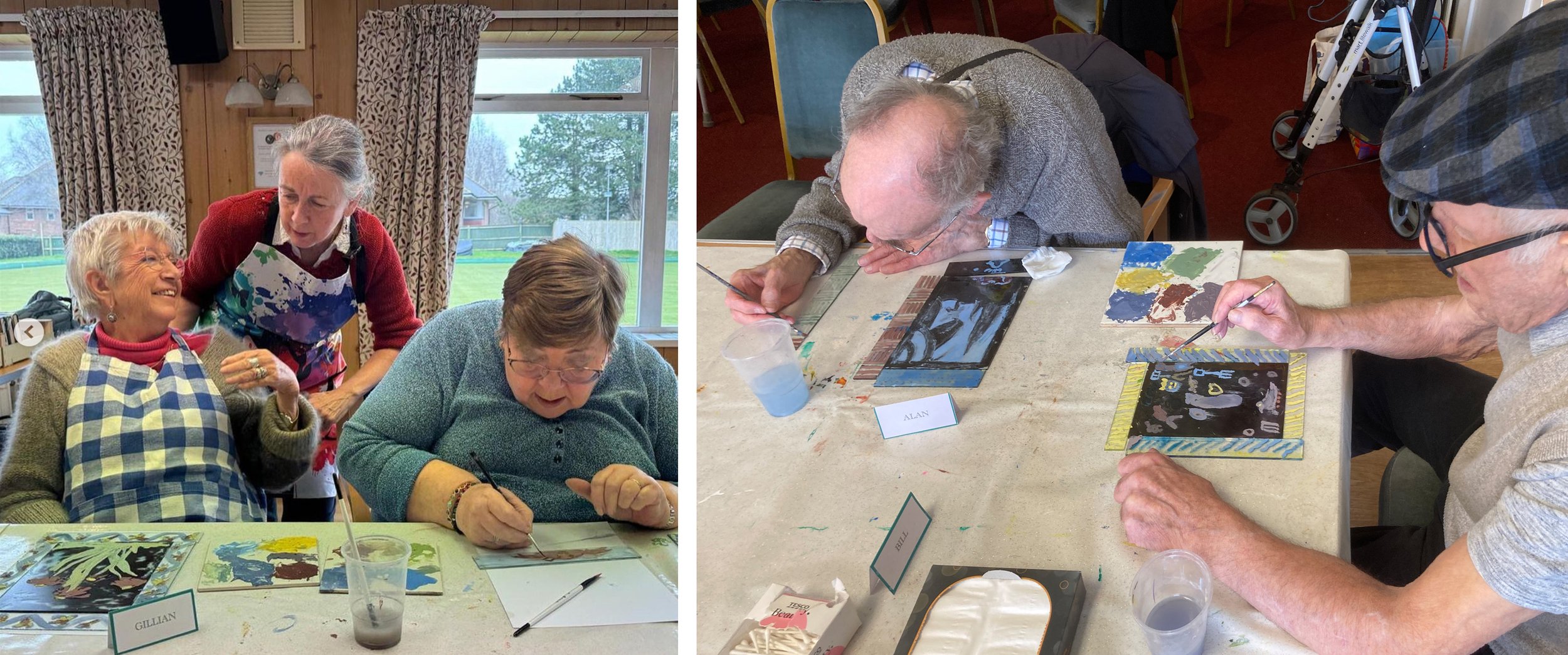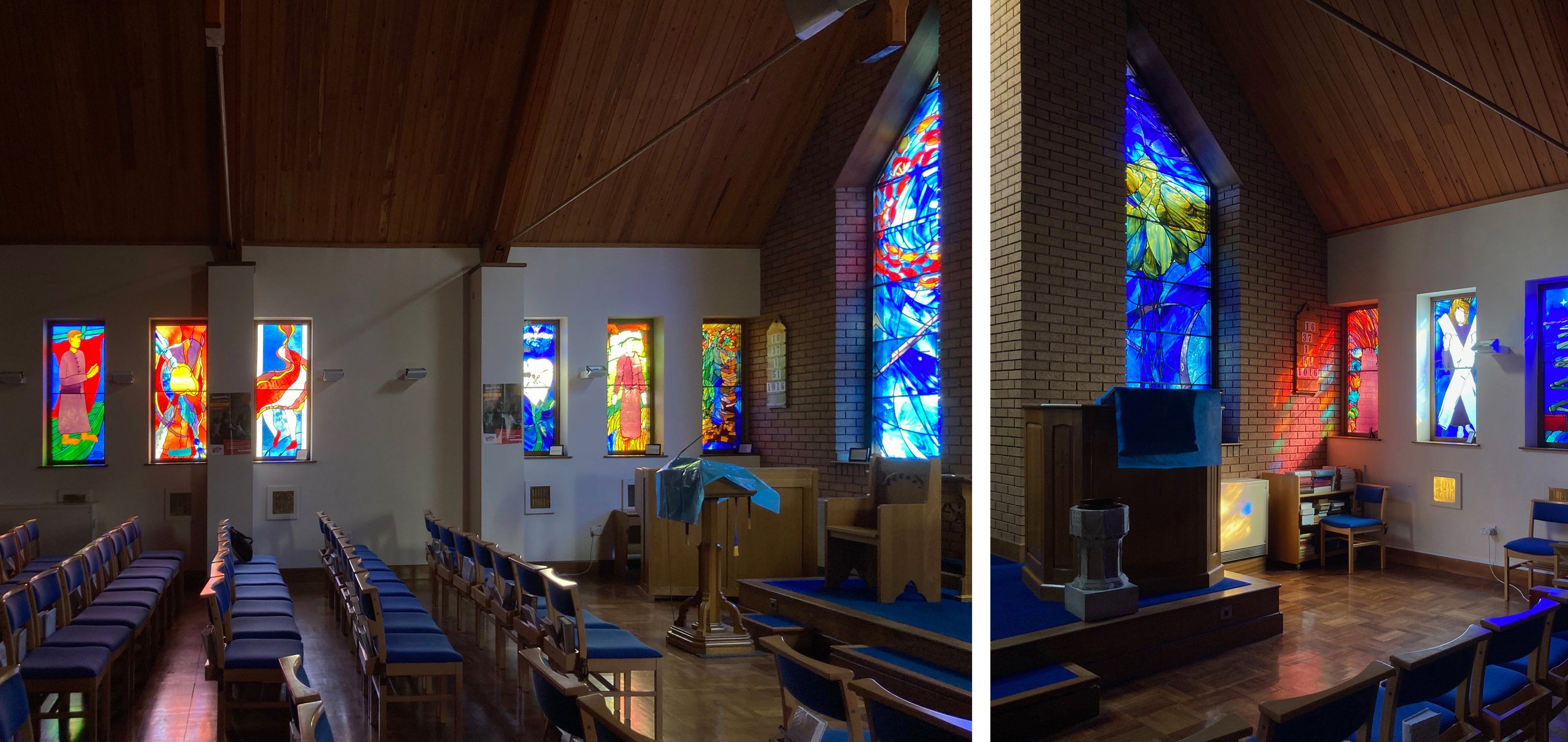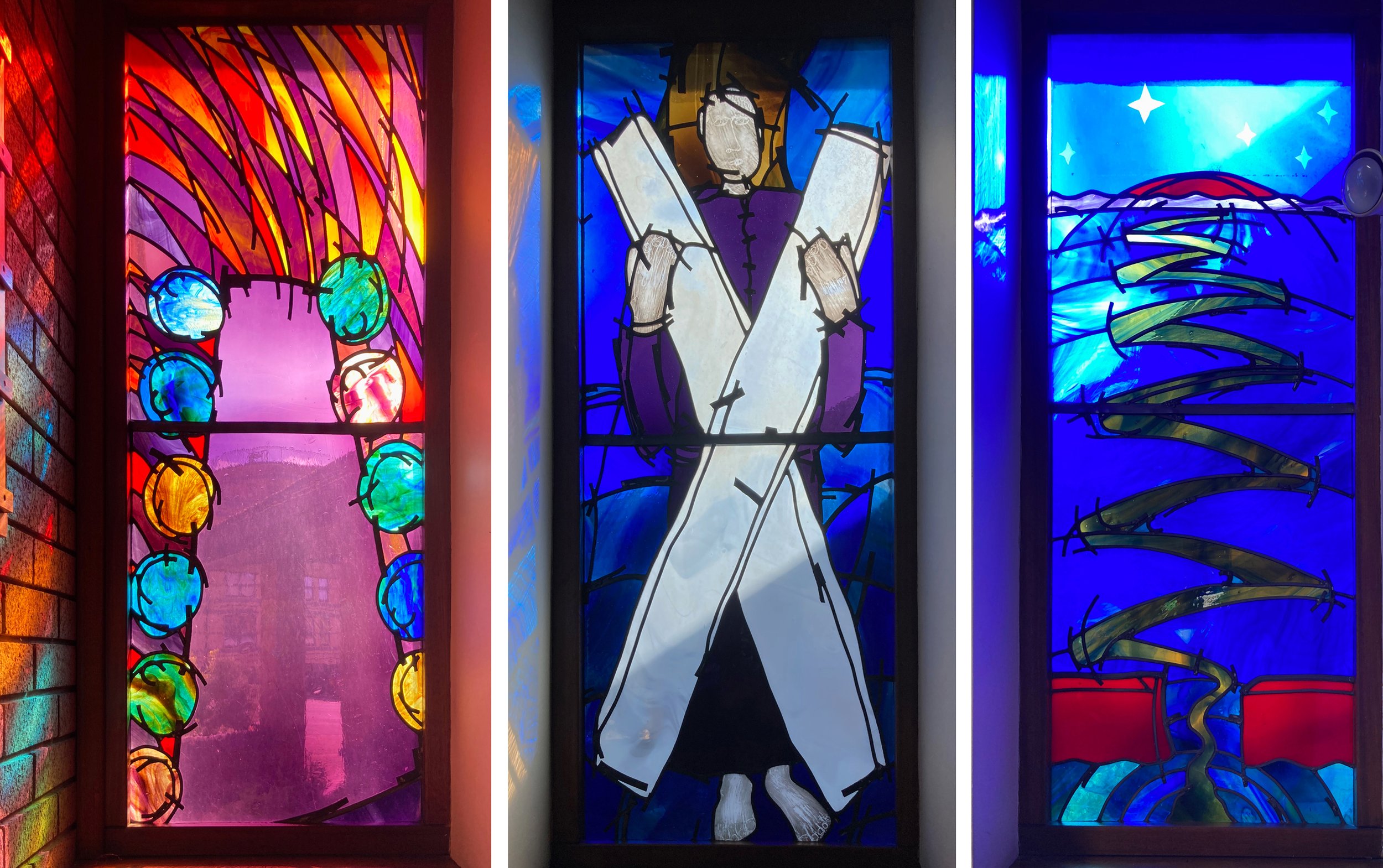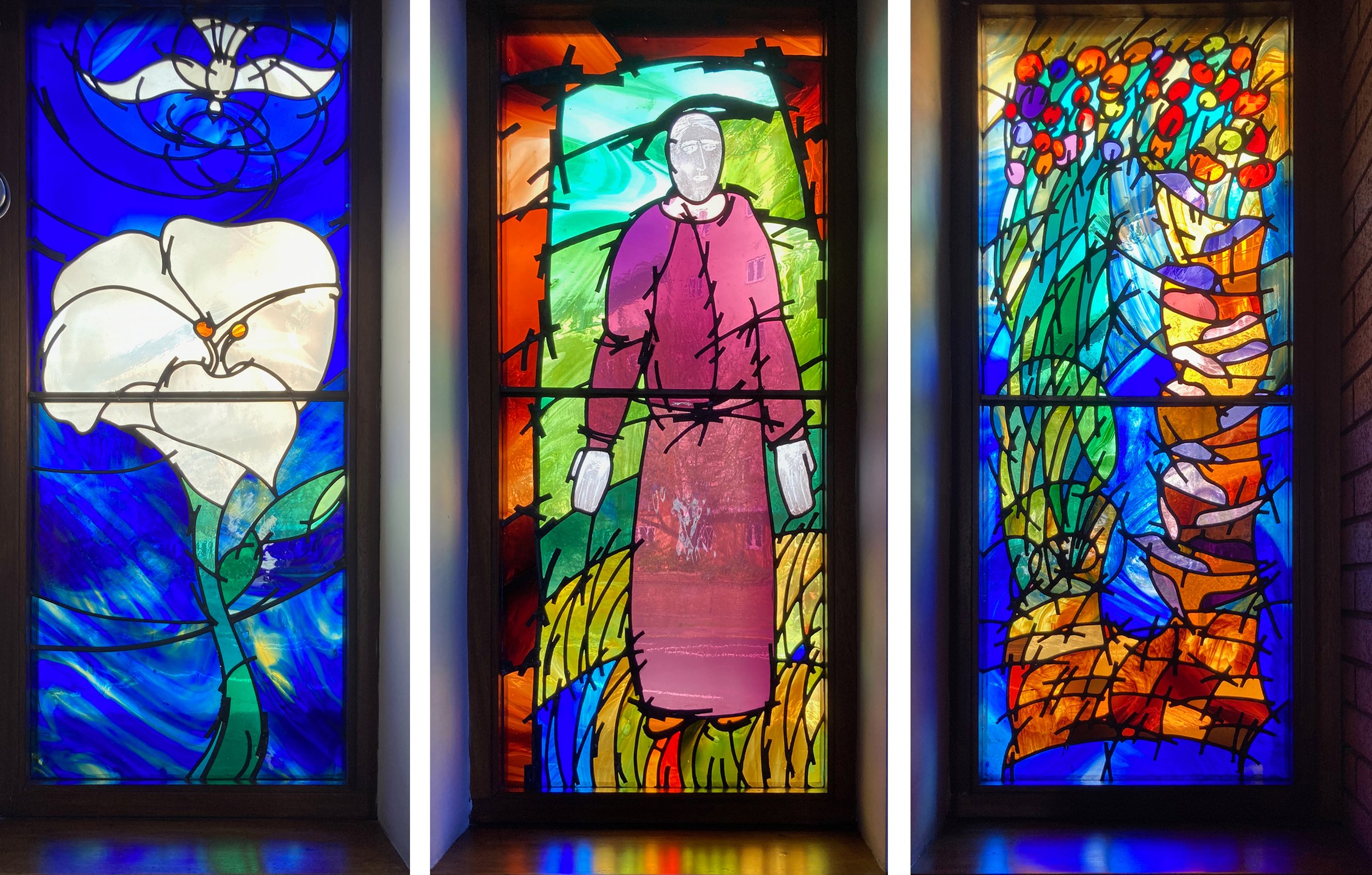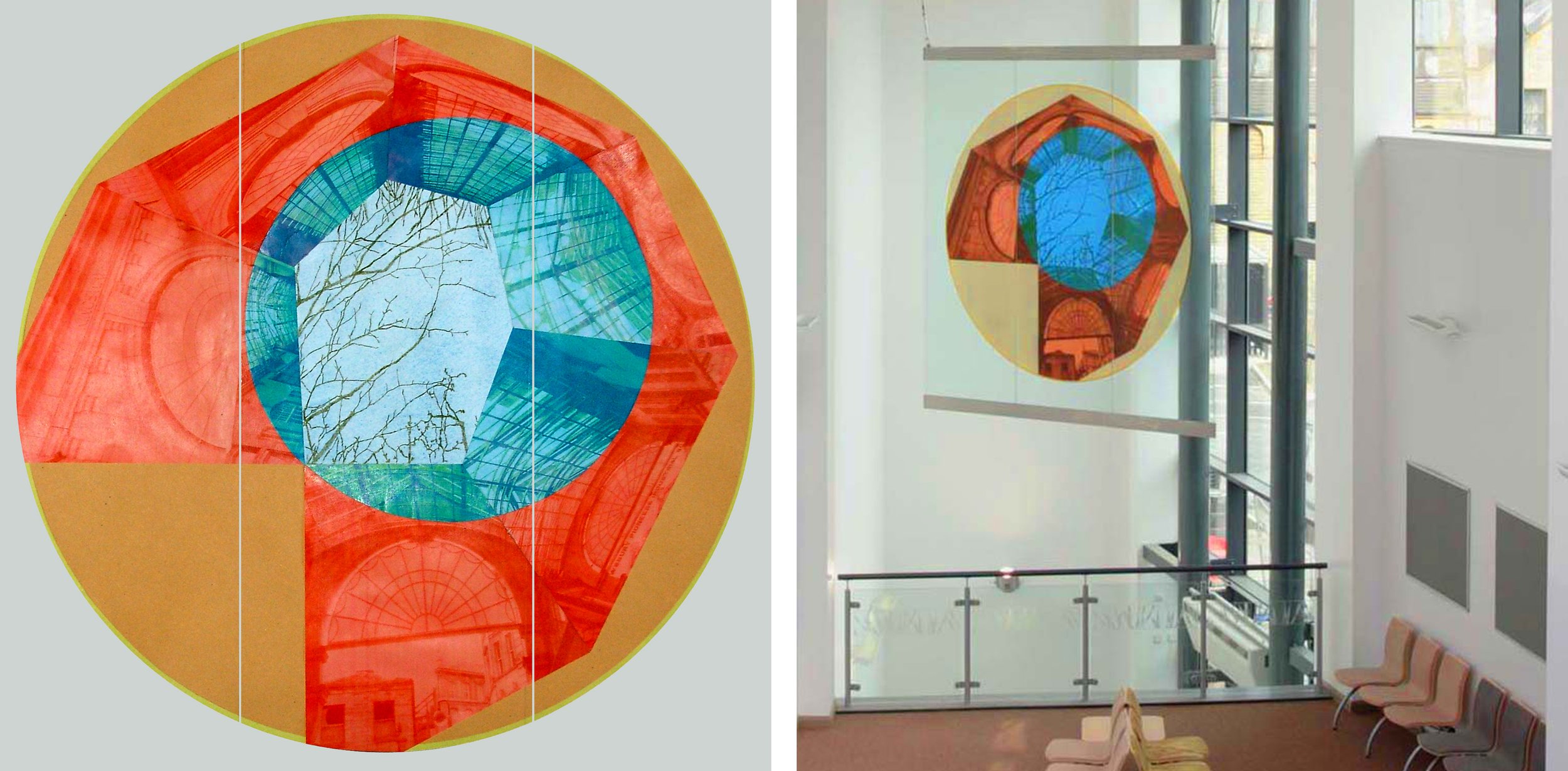The Bowls Club window, week one.
The Marlborough group of Arts Together, a charity that brings together professional artists and older people for weekly art workshops, meets in the Bowls Club. The windows there provided a good setting for the latest version of my glass painting project. At the end of week one we had a row of glass pieces on the window sill ready to fire, their black iron oxide paint having been textured and scratched off by the group members. Four weeks later, after sessions of enamel painting on the centre and border pieces, I returned with the panels that I’d leaded up in my studio, mostly to their specifications, and displayed them on the window sill again. The black and white pieces looked so good in the first photo, the question is have we improved them over the following weeks?
The Bowls Club window, week five.
Glass by Alan, week one and completed panel.
The example of Alan’s panel (above and below) shows the process from week one, with his enigmatic scraffito drawing on a layer of black paint that becomes the ground for further layers of painting in transparent enamel - harder to do and harder to predict the outcome. The borders are a mix of decorative and sample pieces that make it possible to link the pieces together into a solid stained glass panel, a thing that members might actually want to have.
Glass by Alan, week two before and after firing, week four choosing coloured glass to add in corners.
Glass by Gillian, week one, week two and completed panel.
The example of Gillian’s panel (above) shows an original drawing done with great confidence but not really improved by the enamelling, which she did in a ‘colouring in’ style. Her borders however, with speedy, drippy paintwork worked perfectly the first time, no coloured glass pieces were needed to help out the composition of the panel.
A finished stained glass panel represents several hours of work, with different techniques tried out, skills learned and choices made. In terms of the aims of the group, the activity is more important than the art, which should be enjoyable and sociable. You might think that the purity and simplicity of the black and white drawings are sacrificed during the process, but in this type of teaching it’s more about what you learn than what you make.
Gillian (on left) and friends: Alan and Bill painting.





